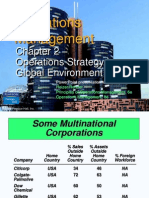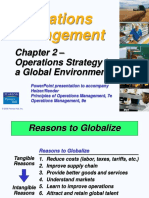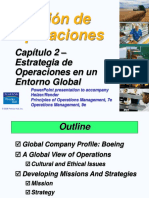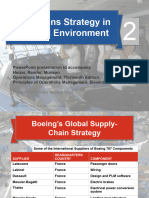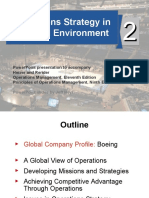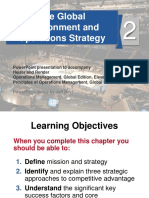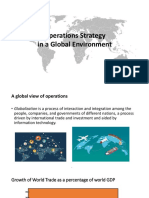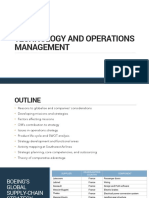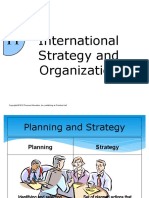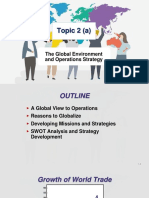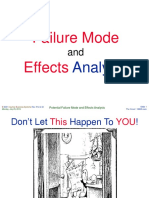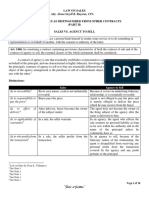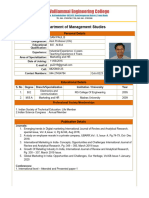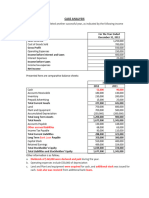0% found this document useful (0 votes)
18 views26 pagesOperation Management
The document discusses global operations strategies used by various companies. It provides examples of companies like Boeing, Benetton, and Sony that have worldwide sales, flexible supply chains, and sources components globally. It also discusses reasons for companies to globalize, such as reducing costs through access to lower-wage international markets, improving supply chain management, and understanding foreign customer needs and markets. The document emphasizes that developing an effective global strategy requires understanding differences in business cultures and ethics across countries.
Uploaded by
Iki Rizal ApriandiCopyright
© © All Rights Reserved
We take content rights seriously. If you suspect this is your content, claim it here.
Available Formats
Download as PDF, TXT or read online on Scribd
0% found this document useful (0 votes)
18 views26 pagesOperation Management
The document discusses global operations strategies used by various companies. It provides examples of companies like Boeing, Benetton, and Sony that have worldwide sales, flexible supply chains, and sources components globally. It also discusses reasons for companies to globalize, such as reducing costs through access to lower-wage international markets, improving supply chain management, and understanding foreign customer needs and markets. The document emphasizes that developing an effective global strategy requires understanding differences in business cultures and ethics across countries.
Uploaded by
Iki Rizal ApriandiCopyright
© © All Rights Reserved
We take content rights seriously. If you suspect this is your content, claim it here.
Available Formats
Download as PDF, TXT or read online on Scribd
/ 26



